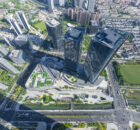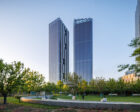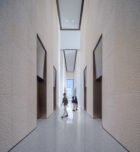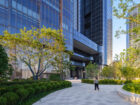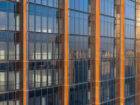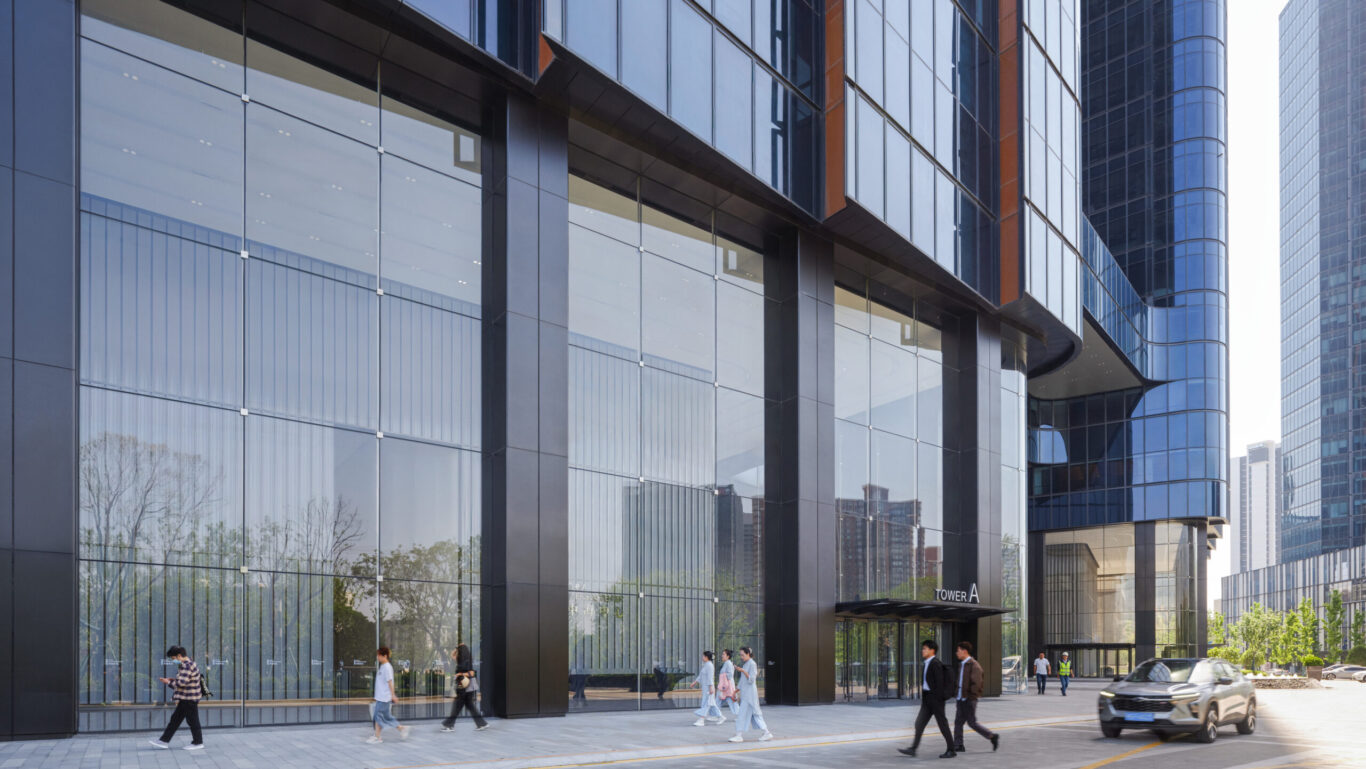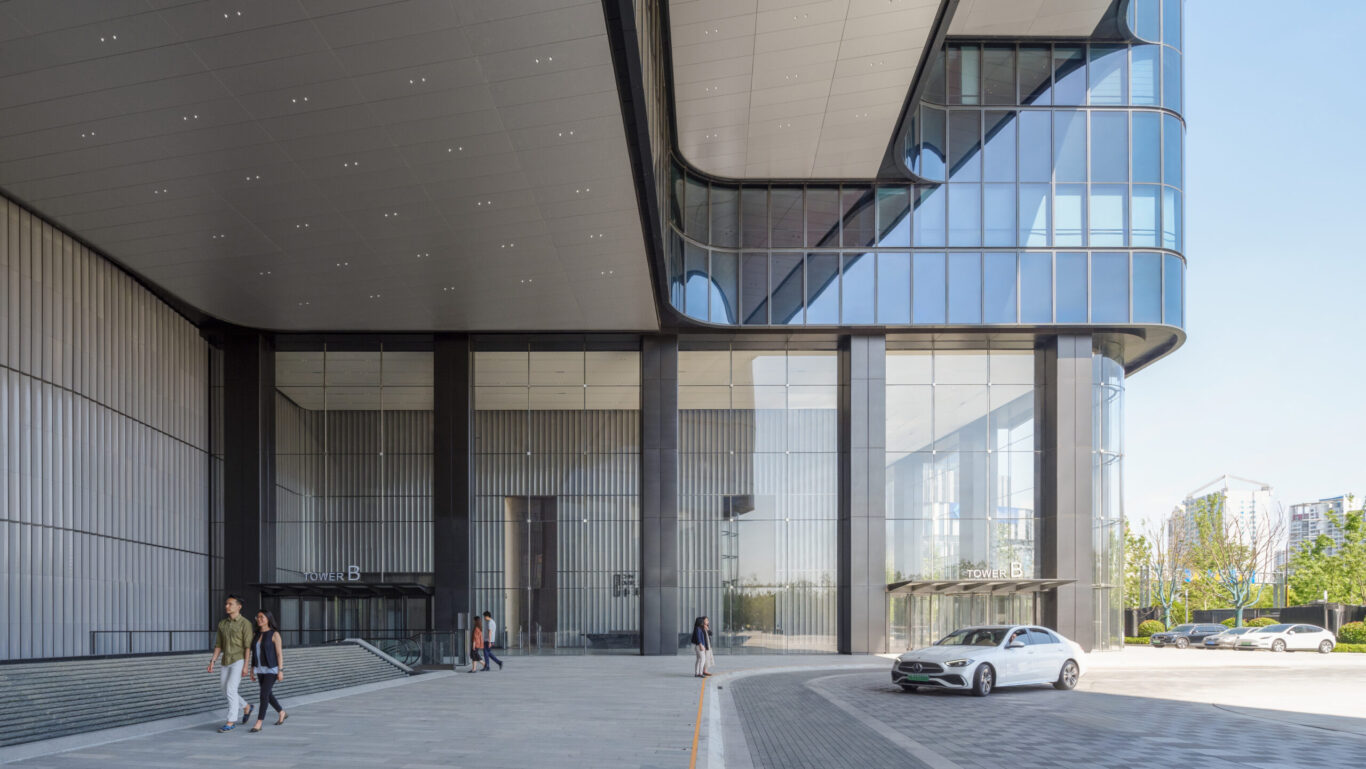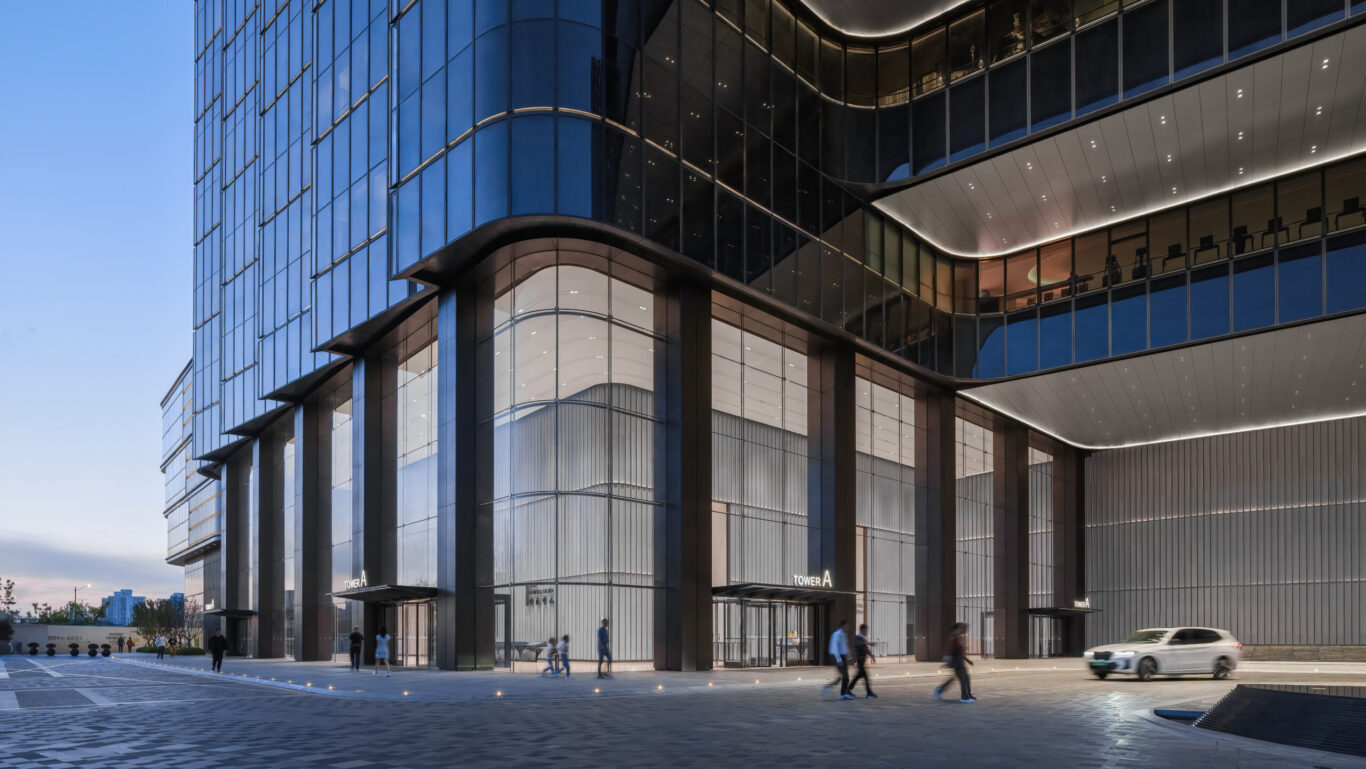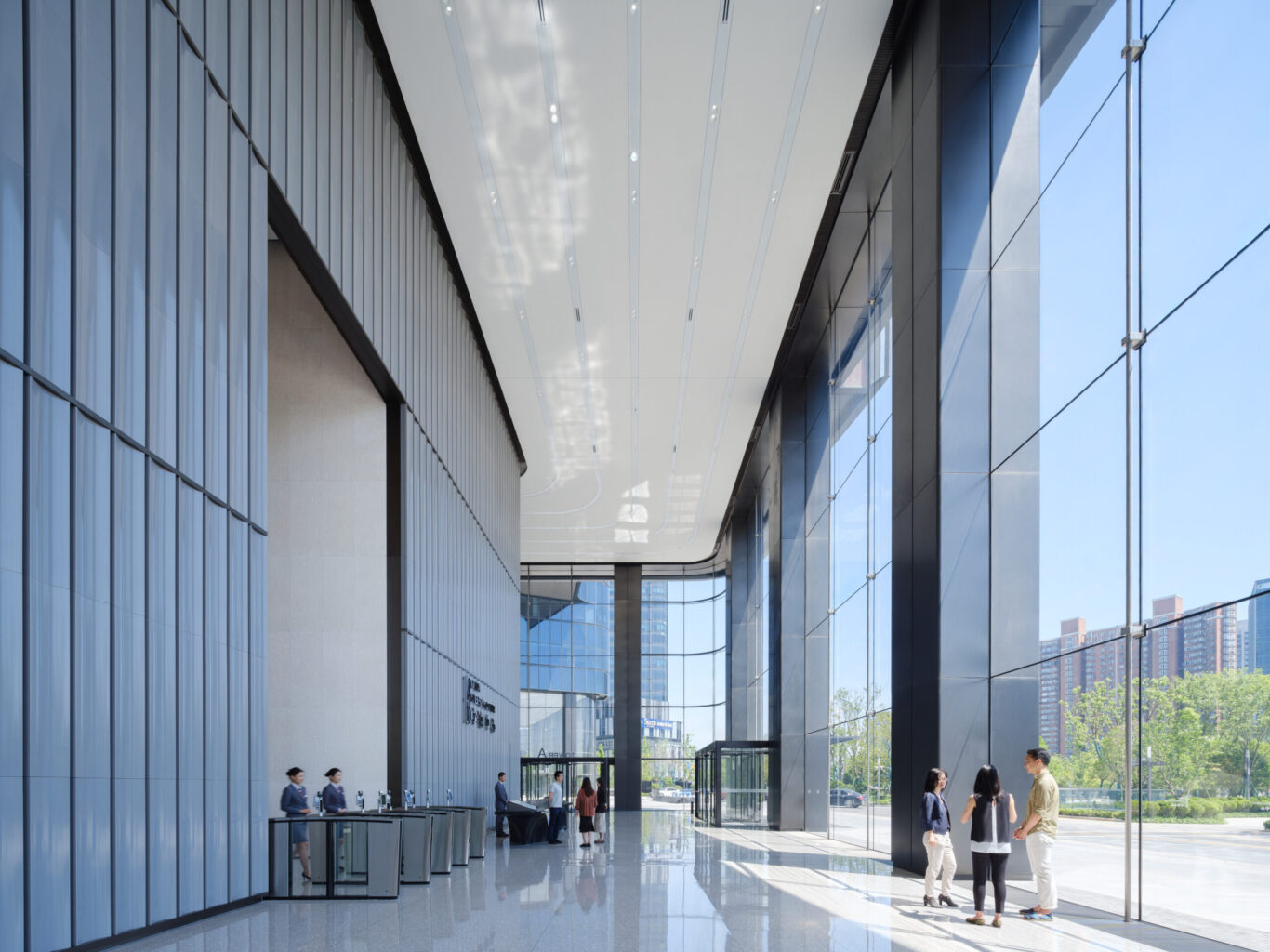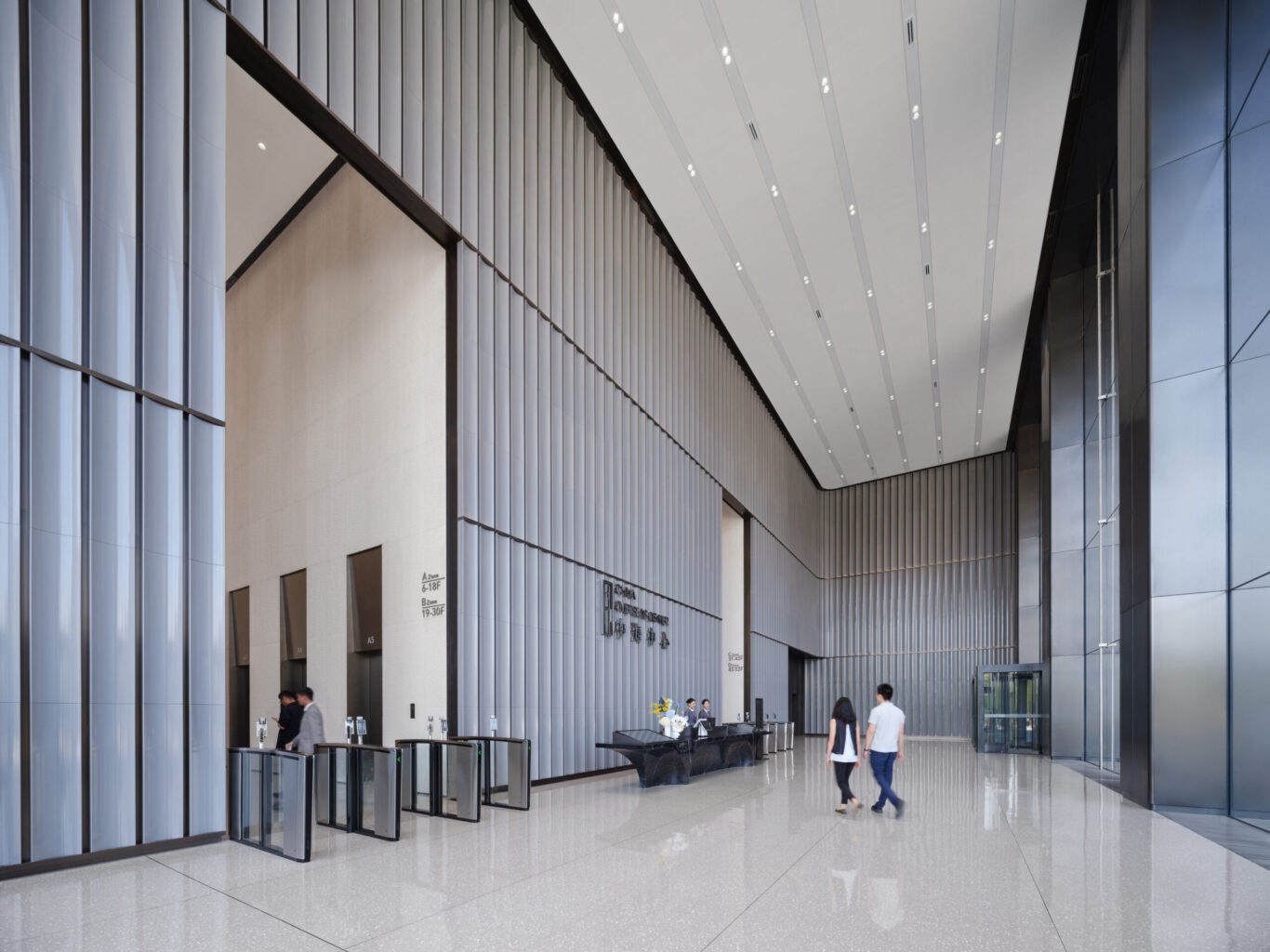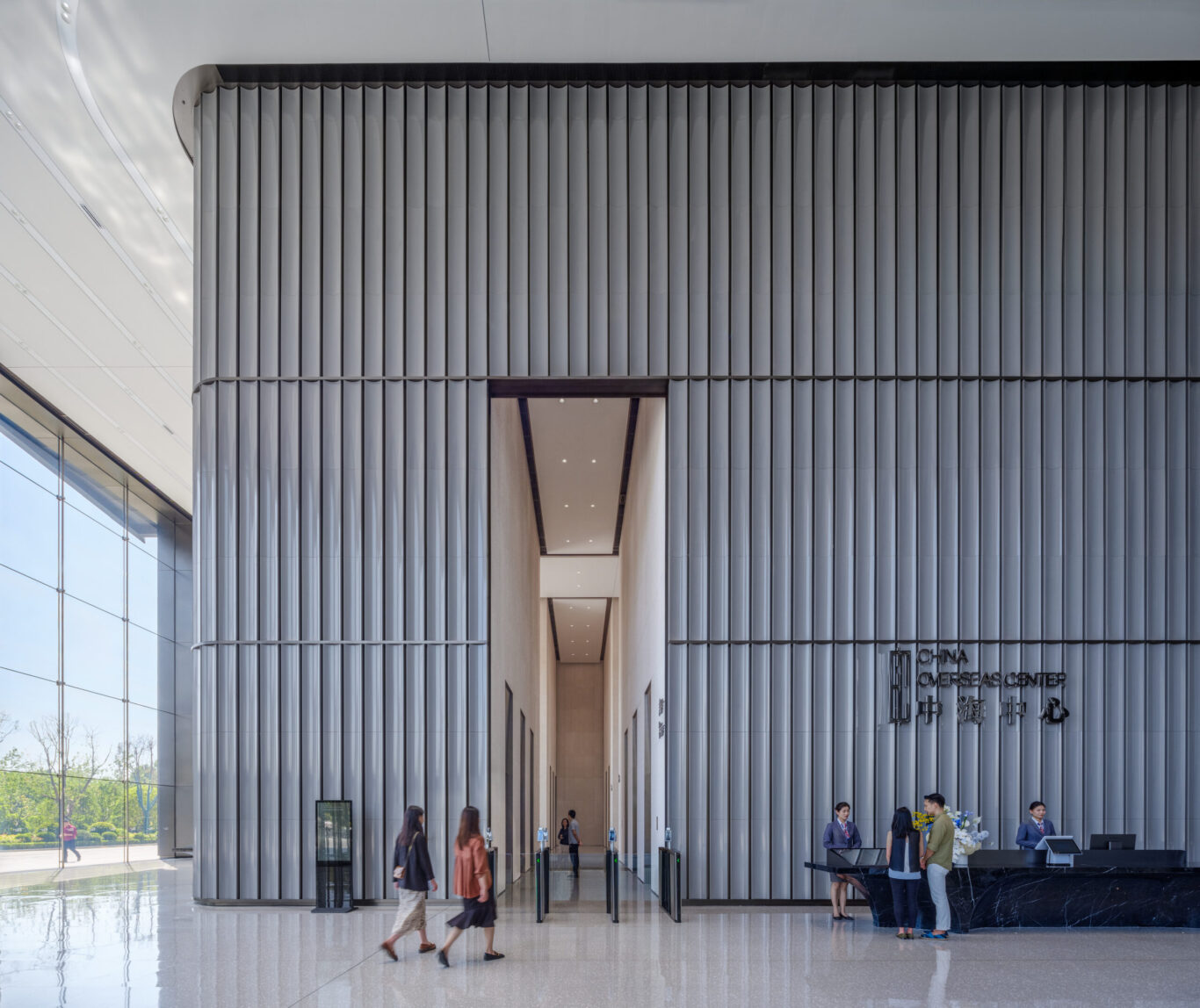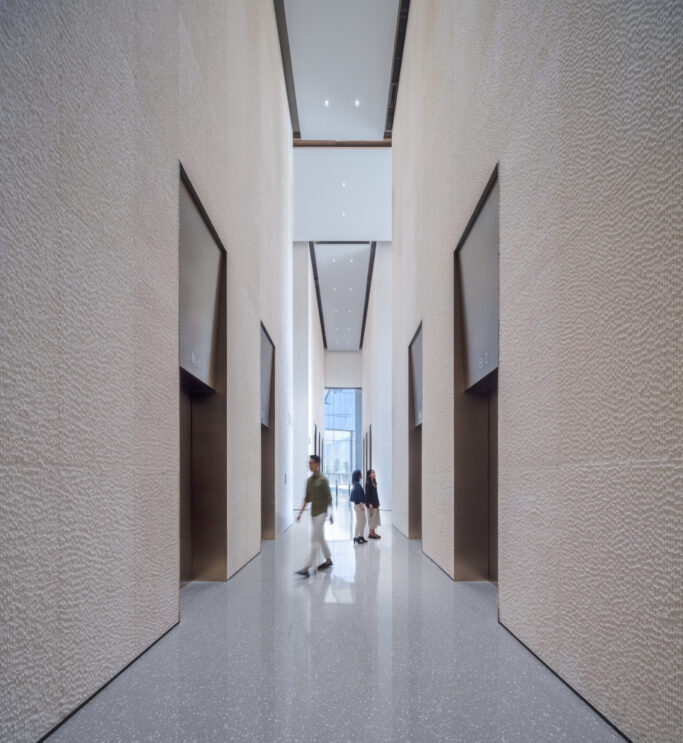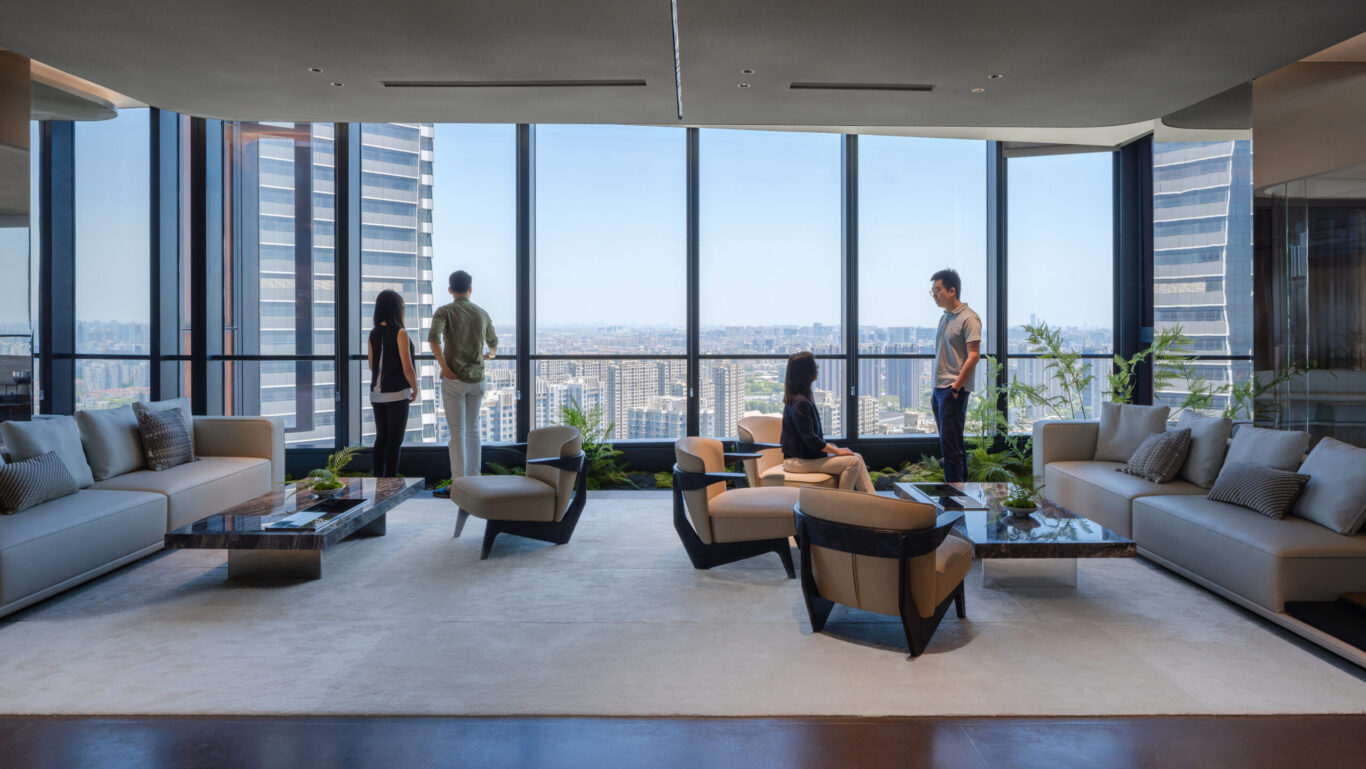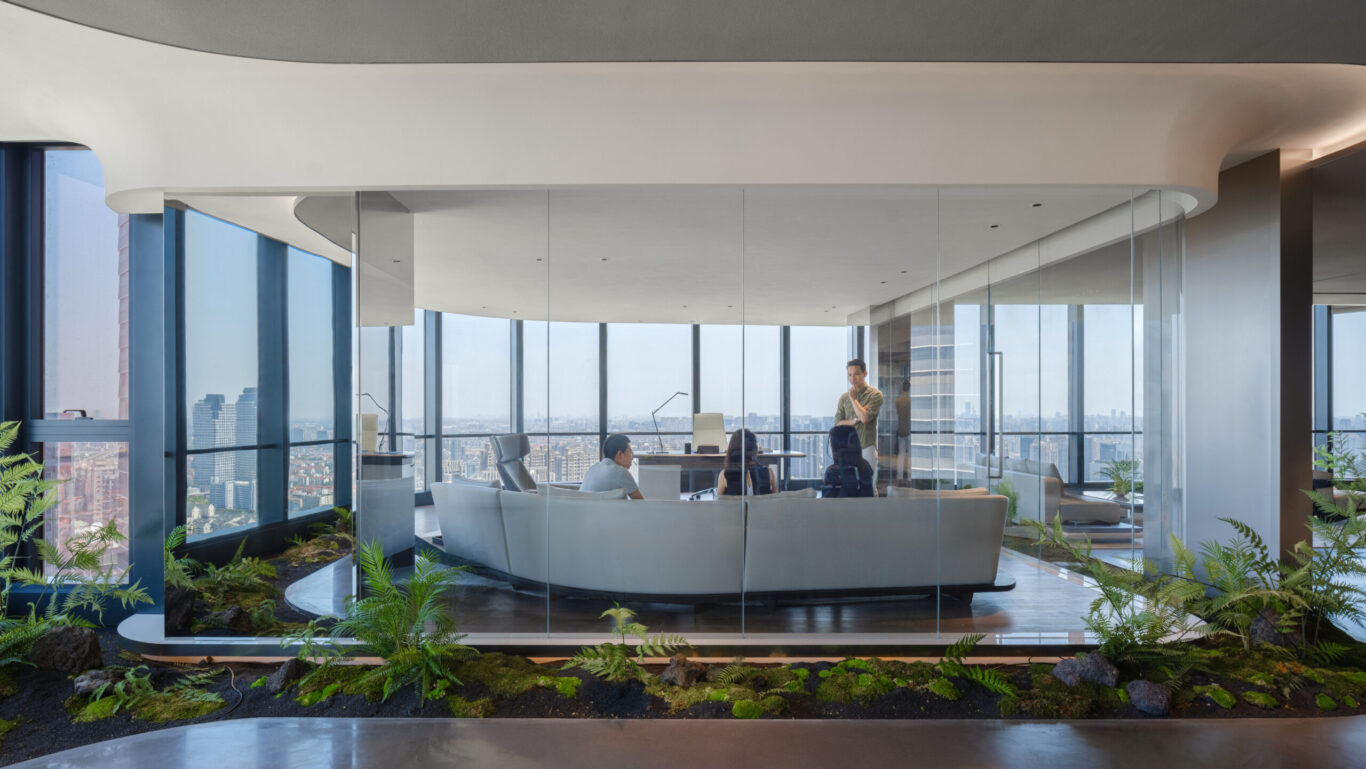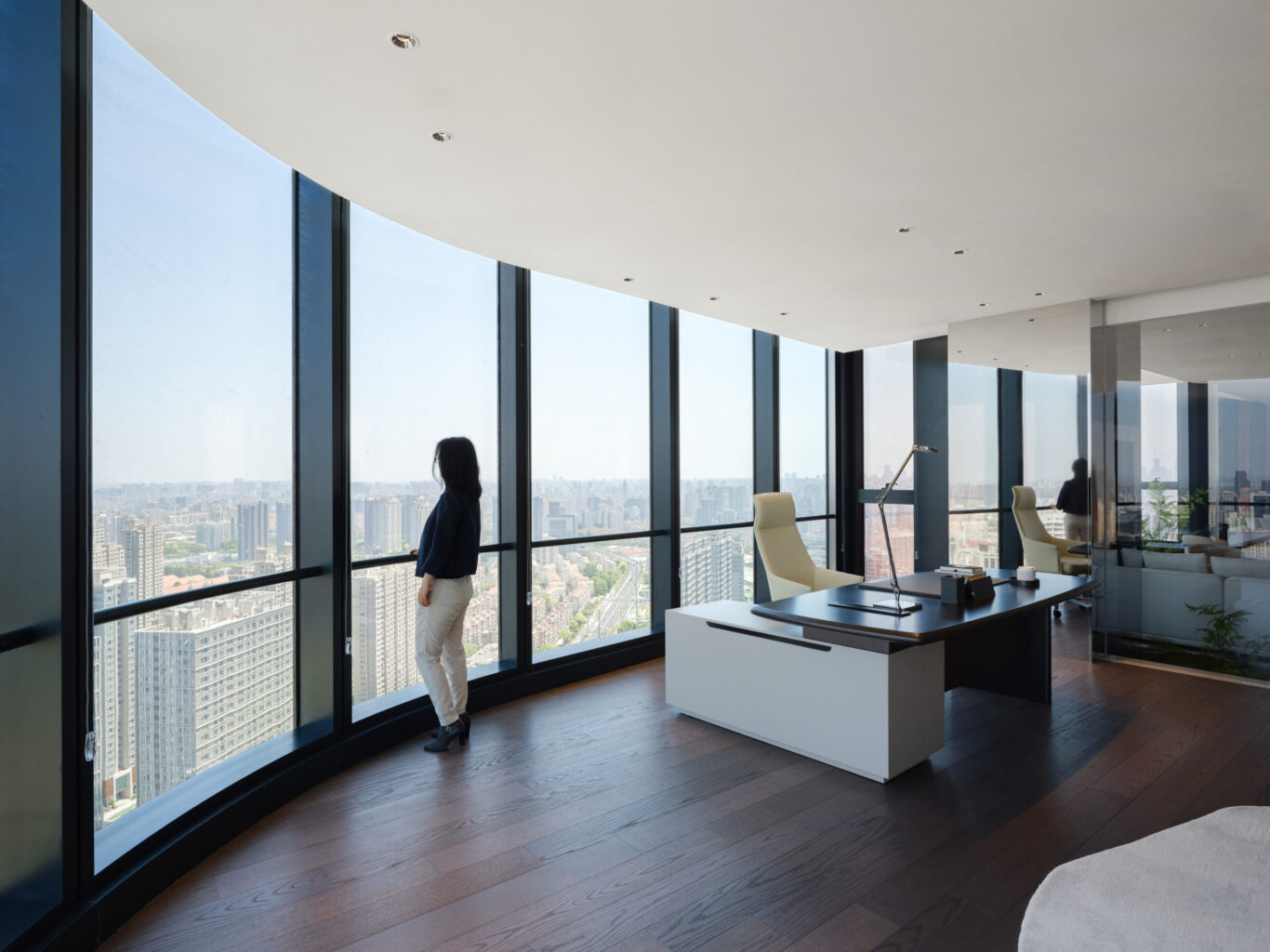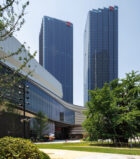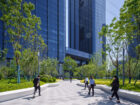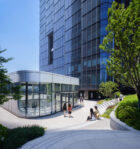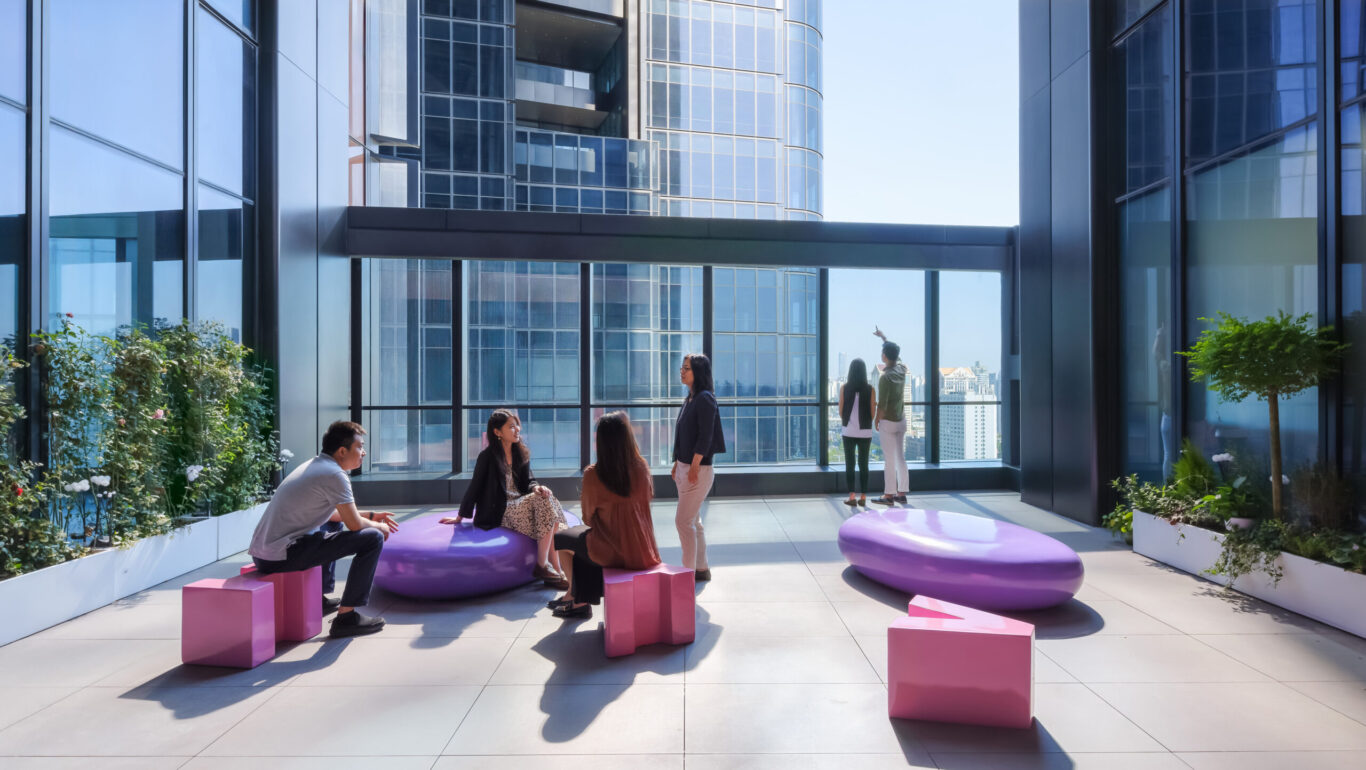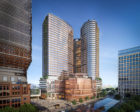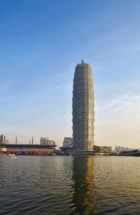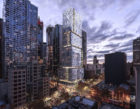From historic village to global business district
The Zhenru Temple district has been an economic hub throughout the history of Shanghai. Also known as Hongqi Village, the area is crossed by canals, which spurred the development of fruit and seafood wholesale markets in the late 1990s. The new Zhenru China Overseas Center is emblematic of the area’s transformation into a contemporary business district.

Composed of two office towers for China Overseas, the Huanyu Max shopping mall, a theater, and cultural amenities, SOM’s master plan for the development integrates these uses into a network of public spaces and historic canals. With open entries at all corners, this transit-oriented development becomes a gathering space for residents, workers, and visitors.
